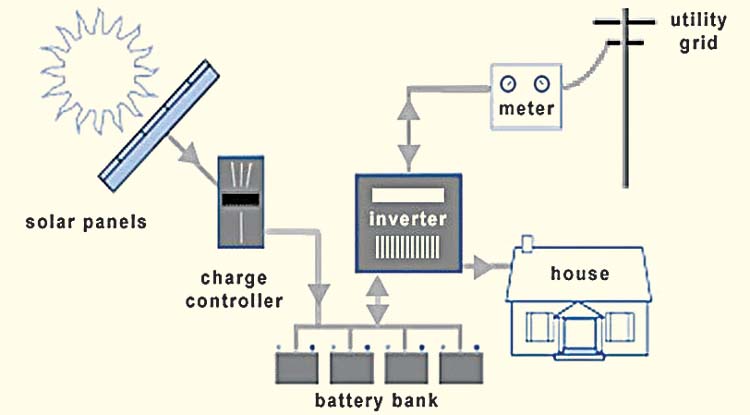Lithium-ion batteries, also known as Li-ion batteries, are a type of rechargeable batteries often used in portable and solar-powered electronics. Since their invention in 1985, rechargeable batteries have been used for various applications including electric vehicles, military applications, and aerospace applications. In recent years, Lithium-ion batteries have also been connected to solar panels to make a solar system completely eco-friendly. While lithium-ion batteries are more expensive than lead-acid batteries, they are still preferred by many.

Why are lithium-ion batteries better?
Lithium-ion batteries weigh approximately 50% less than a lead-acid battery of the same capacity.
Lithium-ion batteries do not require regular inspection or maintenance. Nor do they need to be watered.
A lithium-ion battery charges 30-40% faster than a lead-acid battery of the same size. At the same time, the lithium-ion battery can last for a longer period than a lead-acid battery.
Lithium-ion batteries are completely sealed, therefore, they are not fire, environmental, or a health hazard.
Lithium-ion batteries have a higher charge density this allows smaller batteries to power larger appliances.
These batteries have a self-discharge rate of 2% per month. On the other hand, the self-discharge rate of a lead-acid battery is 4% per week.
An average lithium battery can last for 500 charge cycles, or 2 years, which is five times more than any lead-acid battery.
To understand the source of these advantages, it is crucial to understand the working of a typical lithium-ion battery.
How does a lithium-ion battery work?
There are six types of lithium batteries. However, lithium-ion phosphate batteries are preferred for renewable energy applications like solar panel systems. They show excellent thermal stability, a longer life cycle and are the safest among all six types of lithium-ion batteries. A lithium-ion battery consists of an anode, cathode, separator, electrolyte, and two current collectors. Both the anode and the cathode contain lithium. The electrolyte inside the battery transfers positively charged lithium ions from the anode to the cathode. The electrolyte also transfers the negatively charged ions from the cathode to the anode. This transfer creates a charge which flows through the external circuit. The external circuit is connected to an appliance like a mobile phone, electric car, or household circuit. This connection provides the charge to power the appliance.
What is a lithium battery with an inverter?
A lithium battery with an inverter is an in-built battery with a pure sine wave converter. Lithium-ion charges using direct current. It also produces a direct current to charge whichever appliance is connected to it. However, most household appliances require alternating current to work. The in-built sine wave converter inside this lithium battery with the inverter converts the direct current to alternating current. This converted current can then be used to charge the appliance. Without this conversion, the battery may provide sufficient charge, but the appliance cannot recognize the current and it can’t be powered. There are various lithium-ion batteries without an inverter available in the market. These cannot be used directly to charge any appliance. Instead, they need to be connected to an external inverter which will convert the direct current to alternating current.
How do you install a lithium battery with an inverter?
In this image, the connection of a solar panel system with a battery and inverter can be seen. lithium-ion battery with inverter can be installed in any home with a solar system. The installation steps vary according to the size of the solar panel and the rooftop size. However, the general procedure is as follows:
Rooftop solar panels are mounted on stands facing the ideal direction. The size and number of solar panels depend entirely on the household’s daily energy requirement.
The solar panel is then connected to a charge controller. The charge controller ensures that the household, battery, and any other electrical appliance connected is not overloaded.
The charge controller is then connected to the lithium battery with an inverter. Here, the battery stores any extra charge that is generated.
The lithium battery can then be connected to the household circuit. The charge stored in this lithium battery with an inverter is used to power the household.
A lithium-ion battery with inverter works in these four simple steps. However, since the appliance provides storage and conversion services, a homeowner does not need to buy a separate inverter. If you want to buy products online you can visit Loom Solar store. The inverter can also be connected to the city’s power grid. Any excess electricity generated by the solar panel that can’t be stored in the battery can then be redirected to the city. In return, the homeowner may receive monetary compensation for their investment. Installing a solar panel system with a lithium battery and inverter is an excellent option for those who wish to reduce their carbon footprint and become independent of the city’s power grid. These appliances come with a 25-year warranty which makes them a once-in-a-lifetime investment that can pay off for decades.
-By Snigdha Phatak

